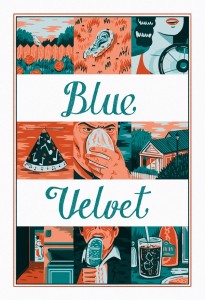 Blue Velvet is arguably David Lynch’s best film. Much is said about the film’s “aboutness”: It is a willfully weird Hardy Boys mystery about sexual awakening—a dry cartoon about the rot beneath the surface of small-town America—an America that, with its white picket fences, gee-whiz banalities and Roy Orbison songs, remains trapped in the amber of the 1950s. Bask though he does in the surreal and the absurd, Lynch strikes me more as an abstract expressionist. He paints the mood canvas in bold strokes. His peculiar talent is the ability to pull a very specific feeling or set of feelings out of moments that are strikingly textured, that are a bit off—that, taken apart, amount to so much nonsense. He commits to filming his dreams—and when pressed together, they sink or swim on the conductor’s sense of rhythm he imposes. In Blue Velvet, the dream logic has the power to engulf you. Seeing to its end the simple setup of a boy’s quest, rooted in an unflinching, voyeuristic look at the duality all around (e.g., the bugs in the mown grass, the cute, kink-loving boy next door, the bug in the cute robin’s mouth), and giving it the air of a funny, lovely and richly colored dream, the movie remains one of Lynch’s most balanced offerings.
Blue Velvet is arguably David Lynch’s best film. Much is said about the film’s “aboutness”: It is a willfully weird Hardy Boys mystery about sexual awakening—a dry cartoon about the rot beneath the surface of small-town America—an America that, with its white picket fences, gee-whiz banalities and Roy Orbison songs, remains trapped in the amber of the 1950s. Bask though he does in the surreal and the absurd, Lynch strikes me more as an abstract expressionist. He paints the mood canvas in bold strokes. His peculiar talent is the ability to pull a very specific feeling or set of feelings out of moments that are strikingly textured, that are a bit off—that, taken apart, amount to so much nonsense. He commits to filming his dreams—and when pressed together, they sink or swim on the conductor’s sense of rhythm he imposes. In Blue Velvet, the dream logic has the power to engulf you. Seeing to its end the simple setup of a boy’s quest, rooted in an unflinching, voyeuristic look at the duality all around (e.g., the bugs in the mown grass, the cute, kink-loving boy next door, the bug in the cute robin’s mouth), and giving it the air of a funny, lovely and richly colored dream, the movie remains one of Lynch’s most balanced offerings.
Rating: A

